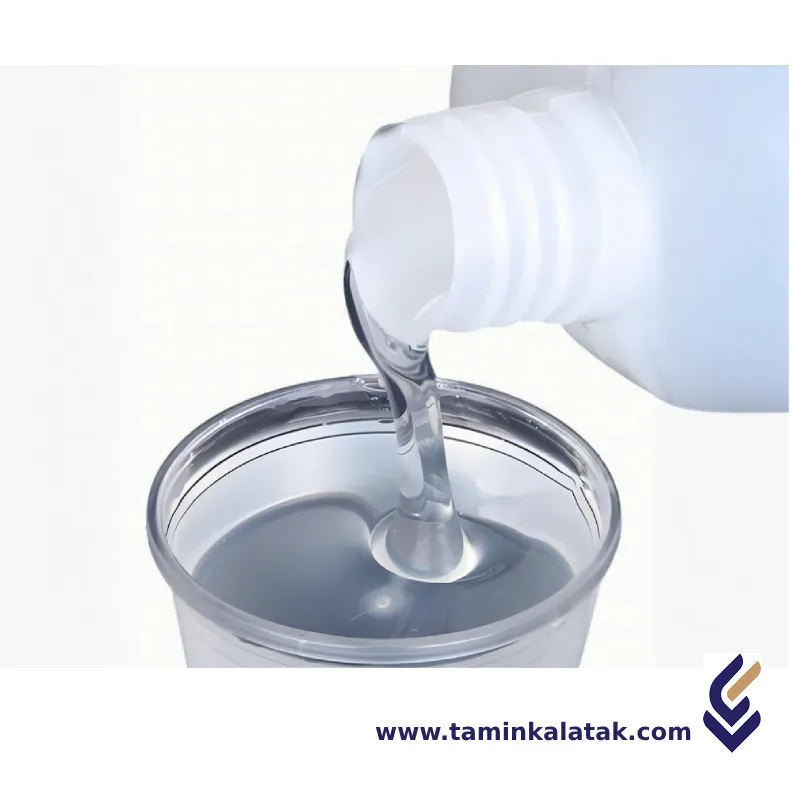Polymers are made up of very large molecules made up of many repeating units called monomers, which ultimately form this long polymer chain
Plasticizers are chemical additives added to polymers to increase their flexibility, ductility, and processability.
Acrylic
An acrylic plasticizer is an additive used to enhance the flexibility, durability, and processability of acrylic-based materials. These plasticizers are commonly used in acrylic resins, coatings, adhesives, and plastics to improve their mechanical properties and reduce brittleness.
Structure
The structure of an acrylic plasticizer typically consists of a polar acrylic backbone combined with flexible, non-polar side chains or ester groups that reduce intermolecular forces within the polymer matrix. These plasticizers are often based on esters of acrylic or methacrylic acid, where the ester groups introduce flexibility by interfering with polymer chain packing, lowering the glass transition temperature and increasing elasticity. Common structures include alkyl acrylates, phthalates, trimellitates, or polymeric plasticizers, which contain long-chain hydrocarbons or aromatic rings to enhance compatibility with acrylic resins. The molecular design ensures that the plasticizer remains well-dispersed within the acrylic polymer, preventing phase separation and ensuring long-term performance stability. Depending on the application, the chemical composition may be tailored to optimize properties such as migration resistance, UV stability, and environmental safety.
Properties
Acrylic plasticizers exhibit several important properties that enhance the performance of acrylic-based materials. They have excellent flexibility, reducing brittleness and improving the elasticity of polymers. Their compatibility with acrylic resins ensures uniform dispersion, preventing phase separation and maintaining long-term stability. These plasticizers also lower the glass transition temperature, making materials softer and more workable without compromising structural integrity. Many acrylic plasticizers offer good thermal stability, allowing them to withstand high processing temperatures without degradation. They are resistant to UV radiation and weathering, making them suitable for outdoor applications. Additionally, they can improve adhesion and impact resistance, which is beneficial in coatings, adhesives, and sealants. Some formulations are designed to be environmentally friendly, with low volatility and reduced migration to maintain performance over time.
Applications
- Used in acrylic paints and coatings to enhance flexibility and durability.
- Incorporated into adhesives and sealants to improve elasticity and adhesion.
- Applied in plastic sheets, films, and laminates to reduce brittleness.
- Utilized in textiles and leather finishes for softness and improved handling.
- Added to medical and automotive plastics for better impact resistance.
- Found in PVC alternatives and eco-friendly plastic formulations.
Advantages
- Enhances flexibility and reduces brittleness in acrylic materials.
- Provides good thermal stability for high-temperature processing.
- Offers excellent UV resistance and weather durability.
- Maintains compatibility with acrylic resins, ensuring uniform performance.
- Reduces glass transition temperature, making materials softer and easier to process.
- Available in environmentally friendly, low-migration formulations.
Disadvantages
- Some types may have volatility issues, leading to gradual plasticizer loss.
- Certain formulations, such as phthalate-based plasticizers, may have environmental and health concerns.
- Excessive use can lead to material softening beyond the desired level, affecting mechanical strength.
- Not all acrylic plasticizers are compatible with every polymer system, requiring careful selection.
Applications
| Applications | , , , , |
|---|
Acrylic
| Products | viscosity(cP) | Density (g/Cm³) | Applications | Process method | Data Sheet | MSDS |
|---|---|---|---|---|---|---|
| Butyl Acrylate (BA) | 0.8-1.5 | 89,00 | Automotive Coatings Architectural Coatings Pressure-Sensitive Adhesives Textile Coatings Synthetic Leather Manufacturing | Extrusion Coating Applications Molding & Casting | ||
| Ethylhexyl Acrylate (EHA) | 3.5-5 | 89,00 | Paints and Coatings Pressure-Sensitive Adhesives Textile Finishes Synthetic Leather Construction Sealants Flexible Acrylic Films | Extrusion & Injection Molding Coating Applications Copolymerization with Other Monomers |







